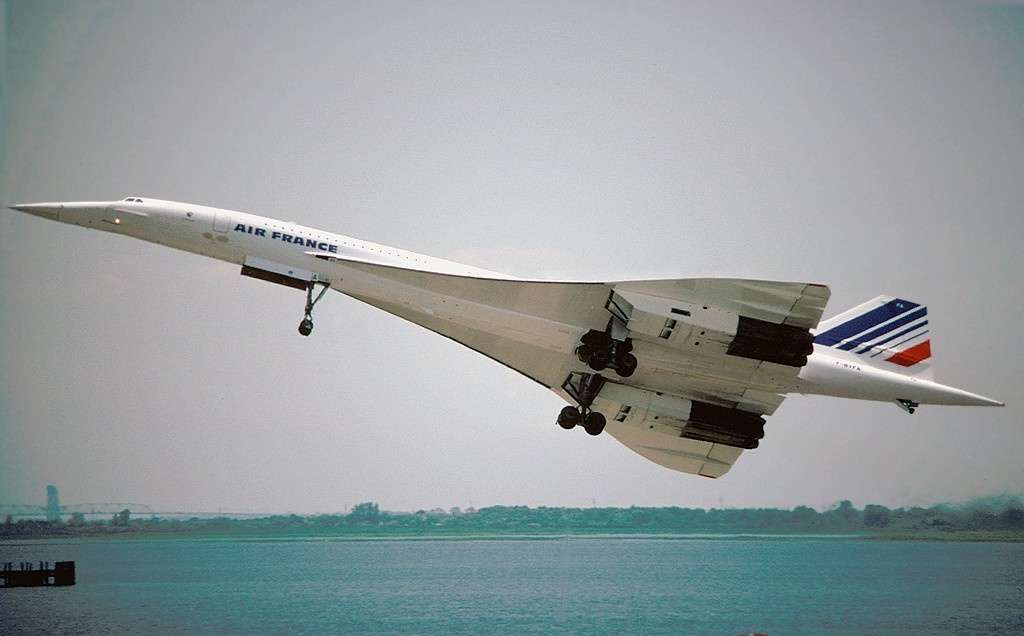The Concorde was a marvel of engineering, and its airframe was designed to withstand the extreme stresses of supersonic flight.
However, flying at Mach 2.01 (twice the speed of sound) came at a cost, and operating and maintaining Concorde’s airframe was subject to a number of unique challenges.
Aerodynamic heating of Concorde…

One of the biggest challenges was aerodynamic heating. As the Concorde flew through the air, the friction caused the airframe to heat up significantly.
This heating was most pronounced at the nose, wing leading edges, and engine intakes, where the air was compressed the most.
Concorde’s airframe was made of aluminum, which has a relatively low melting point.
To prevent the airframe from melting, the engineers used a number of techniques to reduce aerodynamic heating.
For example, the nose and wing leading edges were made of a special heat-resistant alloy.
In addition, the Concorde’s fuel system was used to cool the airframe by circulating fuel through passages in the wing leading edges and engine intakes.
Fuselage expansion

[monsterinsights_popular_posts_inline]
Another challenge posed by supersonic flight was an incredible amount of fuselage expansion.
As the Concorde heated up, the aluminum fuselage expanded. This expansion was greatest at the rear of the fuselage, where the temperature was highest.
In fact, the aircraft’s fuselage stretched by between six to ten inches in suspesonic flight!
Engineers addressed this structural challenge by designing the fuselage to be flexible enough to expand and contract without being damaged.
The fuselage was made of multiple sections that were joined together with flexible joints. This allowed the fuselage to expand and contract by up to 10 inches without causing any structural damage.
Sonic boom

The Concorde also generated a sonic boom when it flew at supersonic speeds.
A sonic boom is a loud noise that is caused by the shock waves that are produced when an aircraft flies faster than the speed of sound.
The Concorde’s sonic boom was a major concern, as it could be disruptive and even damaging to people and property on the ground.
To reduce the noise of the sonic boom, Concorde was designed to fly at a higher altitude when flying over land. In addition, its engines were designed to produce a less intense shock wave.
Other effects onboard Concorde…

In addition to the challenges mentioned above, the Concorde’s airframe was also subject to a number of other effects caused by supersonic flight, such as:
Increased structural loads: The airframe had to be designed to withstand the increased structural loads that are imposed by supersonic flight. These loads are caused by the increased aerodynamic forces that act on the aircraft at supersonic speeds.
Thermal fatigue: Thermal fatigue is a type of damage that can occur when a material is subjected to repeated cycles of heating and cooling. Concorde’s airframe was subjected to thermal fatigue due to the extreme changes in temperature that it experienced during flight.
Corrosion: The supersonic airliner’s airframe was also susceptible to corrosion. Corrosion is a process of chemical degradation that can occur when a metal is exposed to air and moisture.
Inspection and maintenance

Concorde’s airframe was inspected and maintained on a regular basis to ensure that it was safe to fly. These inspections and maintenance procedures were designed to detect and repair any damage that had occurred to the airframe.
One of the most important inspection procedures that the Concorde underwent was a C-check. A C-check is a major inspection that is performed on an aircraft every few years.
During a C-check, the aircraft is completely disassembled and inspected for any signs of damage or wear.
The Concorde also underwent a daily inspection before each flight. This inspection was designed to identify any damage that had occurred to the aircraft overnight or during its previous flight.
Conclusion

Concorde’s airframe was a marvel of engineering, and it was designed to withstand the extreme stresses of supersonic flight.
However, flying at Mach 2.01 came at a cost, and the Concorde’s airframe was subject to a number of unique challenges, such as aerodynamic heating, fuselage expansion, sonic boom, increased structural loads, thermal fatigue, and corrosion.
The airframe was inspected and maintained on a regular basis to ensure that it was safe to fly.
These inspections and maintenance procedures were designed to detect and repair any damage that had occurred to the airframe.
The amazing airframe was a testament to the engineering prowess of the teams that designed and built it. It allowed Concorde to fly safely and reliably at supersonic speeds for over 27 years.

Click the banner to subscribe to our weekly newsleter.









